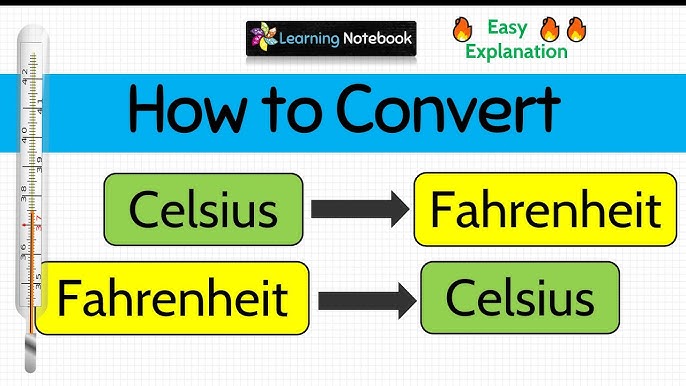Temperature is a fundamental aspect of our daily lives, influencing everything from the weather to cooking and scientific research. However, different regions of the world use different temperature scales, with Fahrenheit and Celsius being the most commonly utilized. In this article, we will delve into the Fahrenheit to Celsius conversion, providing a comprehensive understanding of this essential process.
1. Understanding Fahrenheit and Celsius:
Before diving into the conversion process, let’s grasp the basics of Fahrenheit and Celsius scales:
- Fahrenheit (°F): Developed by Daniel Gabriel Fahrenheit in the early 18th century, the Fahrenheit scale is predominantly used in the United States and a few other countries. In this scale, the freezing point of water is set at 32°F, and the boiling point at 212°F, with 0.1-degree increments between each degree.
- Celsius (°C): Also known as the centigrade scale, Celsius is widely adopted across the globe as the standard unit of temperature measurement. Anders Celsius, a Swedish astronomer, introduced this scale in the mid-18th century. The freezing point of water is defined as 0°C, and its boiling point is 100°C, with each degree being equivalent to 1/100 of the temperature difference between the freezing and boiling points of water.
2. Conversion Formula:
Converting Fahrenheit to Celsius (and vice versa) involves a simple mathematical formula:
�������=(��ℎ���ℎ���−32)×59
��ℎ���ℎ���=(�������×95)+32
3. Fahrenheit to Celsius Conversion Chart:
To facilitate easy conversion between Fahrenheit and Celsius temperatures, refer to the following conversion chart:
| Fahrenheit (°F) | Celsius (°C) |
|---|---|
| -40 | -40 |
| -22 | -30 |
| -4 | -20 |
| 14 | -10 |
| 32 | 0 |
| 50 | 10 |
| 68 | 20 |
| 86 | 30 |
| 104 | 40 |
| 122 | 50 |
| 140 | 60 |
| 158 | 70 |
| 176 | 80 |
| 194 | 90 |
| 212 | 100 |
4. Practical Applications:
Understanding Fahrenheit to Celsius conversion is crucial for various everyday activities:
- Weather Forecast: Many countries report temperatures in Celsius, while others, like the United States, use Fahrenheit. Being able to convert between the two scales helps in understanding weather reports from different regions.
- Cooking and Baking: Recipes often provide temperatures in either Fahrenheit or Celsius. Converting temperatures ensures accurate cooking and baking results.
- Scientific Research: Scientists across the globe use Celsius as the standard temperature scale in their research. Conversion to Fahrenheit may be necessary when collaborating with researchers from countries using the Fahrenheit scale.
5. Conclusion:
Mastering Fahrenheit to Celsius conversion is valuable in numerous aspects of daily life, including weather monitoring, culinary pursuits, and scientific endeavors. With a clear understanding of the conversion formula and a reference chart, individuals can effortlessly navigate between these two temperature scales. Whether you’re planning a trip abroad, preparing a delicious meal, or conducting scientific experiments, the ability to convert temperatures accurately enhances efficiency and ensures precise outcomes. So, next time you encounter a temperature in Fahrenheit, remember the simple conversion formula and chart provided here to effortlessly translate it into Celsius, and vice versa.
